 October 2023
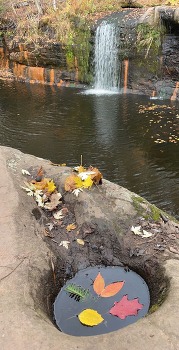
When the world around us feels overwhelming, art and nature provide a balm for the soul.
Art is a medium to express emotions, especially when we’re at a loss for words.
Nature has a calming effect – smells, sounds, and patterns help us relax; our bodies produce endorphins through exercise, increasing feelings of wellbeing.
We hope this newsletter issue inspires you to get a bit of both, nature and art.
Peace to all.
|

An original essay written by Eric A. Englin in the mid-1930s
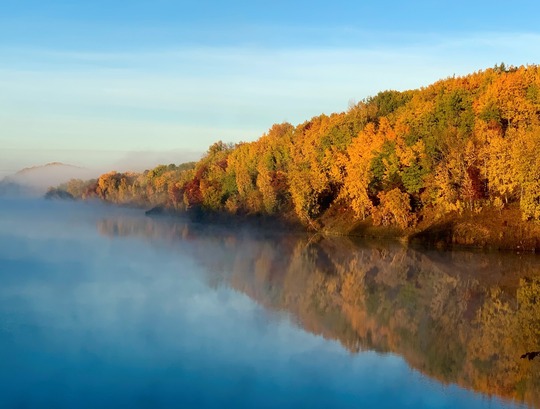 Speaking of loud colors.
There is in the woods near my house a grand concert of such colors this afternoon. The prima donna with the clear soprano is that golden yellow quaking aspen holding her head so high. Loud, yes, but very pleasing. The contralto is that demure sister, the balm of gilead at her side. Nearby is the sweetest tenor, a young maple so loud in his scarlet robes that he really dominates the performance. Look away from him if you can but presently you are gazing at him again. See the tremolo of his high tones as he turns the leaves of his score in the breeze.
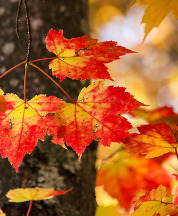
Looking around you perceive there are many of him, not all first tenors. Some are fading into second, and the duet thus achieved is a marvelous harmony. But who is this of the vari-colored coat, red, brown and green! That is the basso profundo, my sturdy friend the oak. He came into the concert a little late, as befits so important a personage, but now that he is here he rolls out such vibrant tones of color that we see at once the concert would be incomplete without him.
See! Yonder stands one too proud to sing, his head high above the rest, the aristocrat, the tall pine. He has a part nevertheless. He plays the tuba, and his less proud relatives, the balsams and spruces, play the trombones, together laying a foundation upon which the whole performance rests. A durable foundation, for when these gayer louder colors shall lie buried under the white robe of winter, the pine, the balsam and the spruce stand.
But who is that old fellow on the hill there, pointing his fingers, shaking his arms, nodding this way and that, humping himself and then almost jumping off as he catches the breeze? That, friends, is the conductor. He has outlasted all the gayeties of his generation, and still he stands there, his arms, his head, his body, all giving rhythm to the concert. A veritable Damrosch*! An old oak!
|
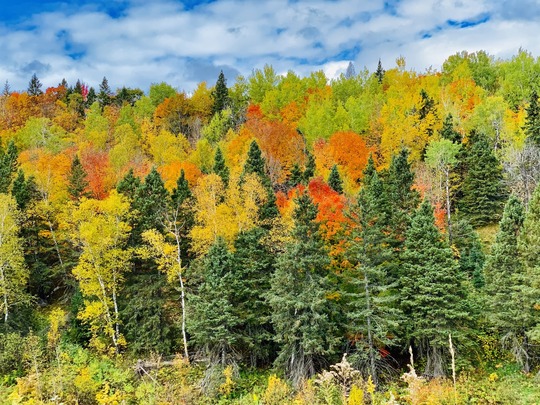 (*)Note: A contemporary of Englin's, Walter Damrosch was a Kingdom-of-Prussia-born American conductor and composer. He was the director of the New York Symphony Orchestra who conducted the world premiere performances of various works, and was instrumental in the founding of Carnegie Hall.
Eric A. Englin, author of "A symphony of color," emigrated from Sweden when he was around 12, and spoke no English at the time. A music lover and banjo player, it makes sense that he saw a symphony in the fall colors! Englin was also a prolific letter-writer, who wrote his memoir at age 80.
His proud great-granddaughter, retired DNR fall color predictor Val Cervenka, shared this gem with us, inspiring a whole newsletter issue about fall-related art. We hope you enjoy the art as much as we do and, maybe, create some art of your own?
Jill Reedy's fiber works reflect the tranquility she feels in nature.
 Growing up on a hobby farm, one of 12 children, Reedy connected with her father through their shared love of birds and with her mother through creative projects. She combines both loves in her nature-inspired felted sculptures.
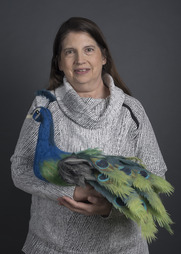
"When I'm outside, walking or simply sitting, it's like I can just breathe a little easier out there," says Reedy. "I like to observe little animals. It's peaceful to me. I hope to transmit that tranquility and peace to others through my work."
Reedy has practiced at Interact Center for Visual & Performing Arts since 2018. Interact is a progressive visual arts studio and theater company and its work challenges perceptions of disability. Since 1996, Interact has worked to advance the recognition of professional working artists, uniting disparate artistic identities, abilities and backgrounds in the spirit of radical inclusion.
|


We're delighted to introduce our newest Minnesota state parks gift card, an original design by artist Marlena Myles.
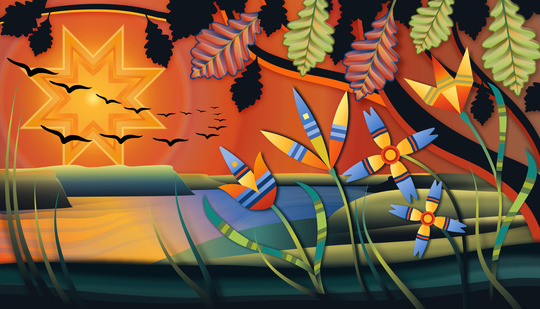 A photo the artist took at Frontenac State Park served as inspiration for this beautiful artwork.
Marlena Myles is a self-taught Native American (Spirit Lake Dakota) artist located in St. Paul. Myles describes her art as bringing modernity to Indigenous history, languages and oral traditions while using the land as a teacher.

The art on the gift card is inspired by the Mississippi River flyway, so called because many birds use it as they migrate in the fall and spring. Dakota people named many locations around the Mississippi flyway after the bird nation, and even built ancient rock effigies in their image.
"With my illustration, I wanted to honor this bird migration route as an endless inspiration for generations of people along the Mississippi River," shared Myles. She included the Morning Star symbol as the sun, representing the wisdom and knowledge we gain from connecting with the natural world around us.
This gift card design will be on sale soon online and at select state parks.
|
The Prairie Pod is a podcast that communicates the science surrounding prairie conservation, restoration/reconstruction, and management. And, sometimes, the art the prairie inspires.
 Clockwise from top left: Side-oats grama shows off its florets in black and white photography by Kristi Link Fernholz; quilt inspired by the wildfires of 2015 by Gwen Westerman; painting called “Prairie chicken spirit” by Ross Hier; Eliza Blue poses at her ranch in South Dakota.
On the last episode of the Prairie Pod, hosts Megan Benage and Marissa Ahlering talk with poet, visual artist, and writer Gwen Westerman, fine art photographer Kristi Link Fernholz, folk singer and writer Eliza Blue, and visual artist Ross Hier.
The love of the prairie inspires and sparks imaginations, leading to art creation. Listen to a conversation with four artists working in different media — fiber, quilting, photography, song writing, poetry and painting.
They’ll walk us through how prairie lives in their art and why that inspiration continues to move them.


Assistant park manager and wildlife and landscape artist Jim DeVries shares how time in nature, fall in particular, provides inspiration for his art.
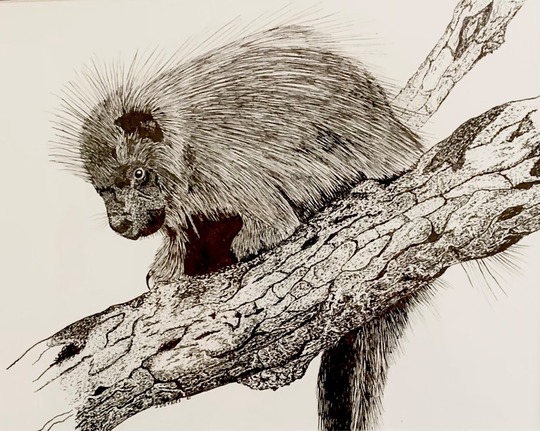 Jim DeVries spotted a porcupine during a late fall hike and made this drawing in ink.
Autumn is a time of year that inspires my art. The bright colored foliage is perfect for landscapes I emulate with my acrylic paints. The bare trees make it possible to spot animals we don’t typically get a chance to see. Like the porcupine.
Porcupines spend their days up in the trees, well hidden in the thick canopy. With the view cleared after surrounding trees had lost their leaves, I was able to spot this porcupine on a white pine tree near Tower, Minn. I drew it in ink, a medium that makes me slow down and concentrate on every detail.
Next time you're out, you too can try drawing something you see in nature. See how many details start coming in focus.
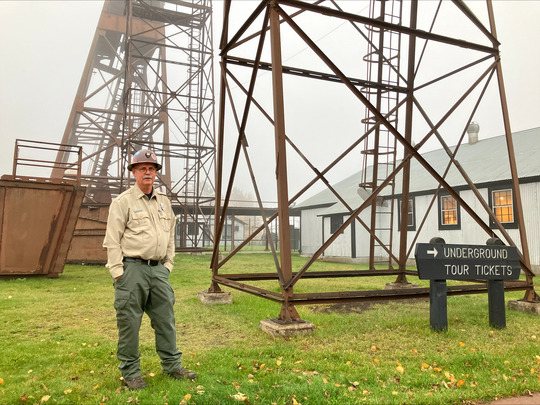
|